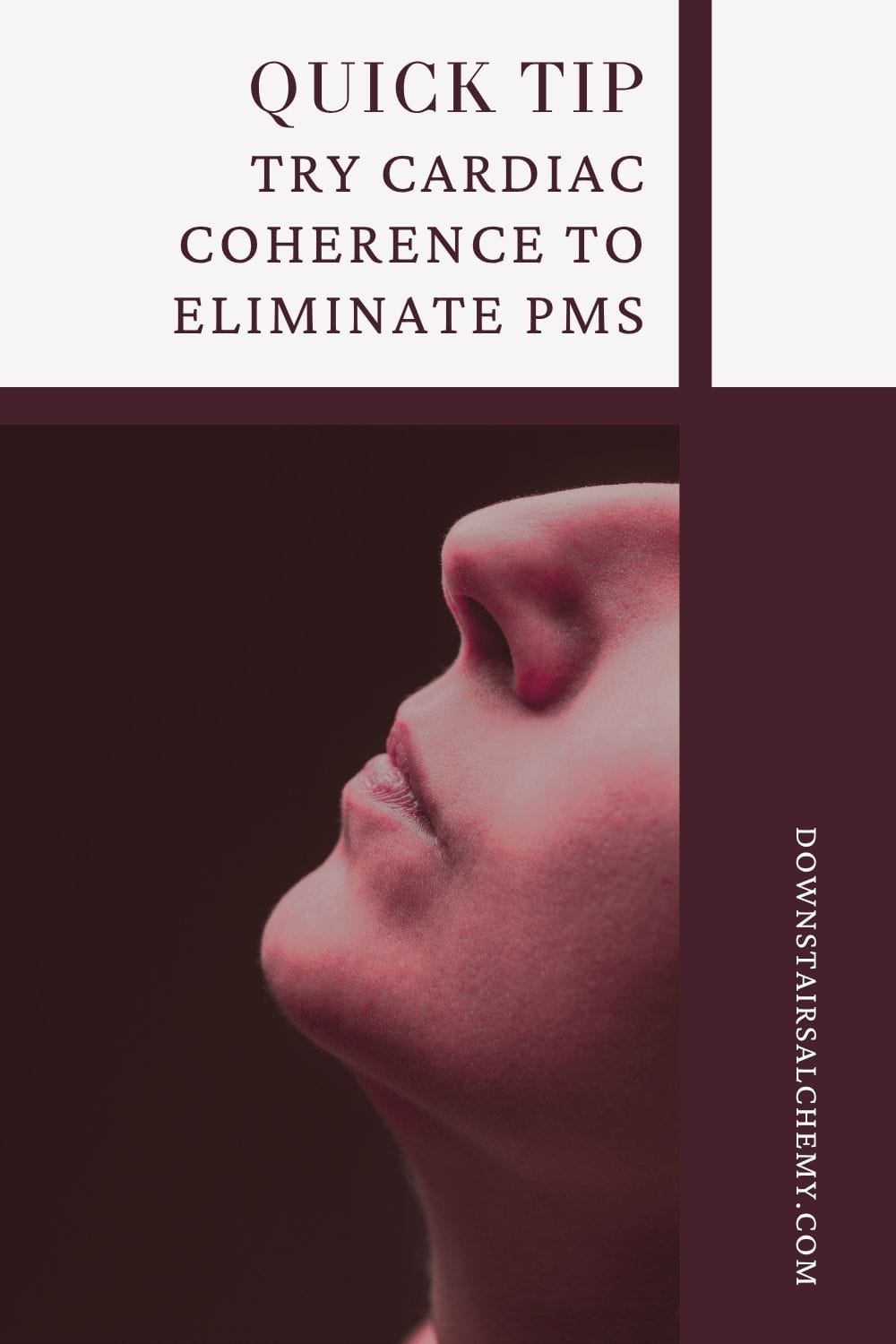*Prefer to listen? 🎧
This blog is the transcript of a podcast episode. If you’d rather listen, you can find the full episode here:
The information provided in this blog post is for educational purposes only and is not intended as medical advice. Always consult with a qualified healthcare provider before making any changes to your diet, exercise routine, or medical treatment plan. We are not responsible for any adverse effects or consequences resulting from the use of any suggestions, products, or procedures discussed in this article.
Mentioned in this episode:
When Relaxation Triggers Anxiety: Try This Instead
Maybe you’re struggling with irregular cycles, PMS, painful periods, your mood all over the place, or maybe you’re just feeling out of sync with your body lately. You understand the connection between your symptoms and your food and lifestyle, so you have been making an effort to eat well, exercise, drink enough water, and so on. But your symptoms persist despite doing all the “right” things. Well, my friend, it’s time to address a missing piece – something many don’t think of when trying to heal their menstrual symptoms and hormonal imbalances. But it is one of the most powerful pieces. Today we’ll be talking about what the nervous system is, why it plays such a key role in your reproductive and menstrual well-being, and how you can support it.
So without further ado I bring to you, the one, the only, nervous system.

What is the Nervous System (NS)?
Let’s start from the beginning.
The nervous system is your body’s communication network. It’s made up of your brain, spinal cord, and all the nerves that branch out through your body— like an electrical wiring system. These nerves connect everything: your organs, muscles, skin, and even your gut. It works 24/7 to send and receive messages between your brain and your body, without you having to consciously think about it.
It uses tiny, fast electrical signals—kind of like text or email—to communicate. Your brain sends messages down your spinal cord (which is composed of a bunch of nerves) and then throughout the body, giving directions. Your brain sends out messages like, “Hey, muscles! Time to move!” or “Breathe!” And your body sends messages to the brain like, “Ouch, that’s hot!” or “We’re low on energy—send food cravings.”
Essentially, the nervous system helps you do all the things that happen ‘behind the scenes’ subconsciously, like:
- Move your muscles
- Sense pain and pleasure
- React to your environment
- Regulate temperature
- Maintain balance and coordination
- Manage things you don’t even think about, like your heartbeat, digestion, and breathing
Basically, without it we’d all be dead.
Your nervous system is constantly taking in information from your environment through your senses—what you see, hear, smell, taste, touch, and what you think. It uses all of this input to decide whether you’re safe or in danger. Based on what it perceives, it shifts your body into one of two modes: sympathetic or parasympathetic.
SYMPATHETIC
Also called “fight or flight.” This is your high-alert, survival state. It was originally meant to protect us in life-threatening situations—like being chased by a bear. In this state, processes and activities that aren’t necessary for the body’s survival are slowed or halted. Digestion slows or stops because you’re definitely not going to be eating, and digestion isn’t necessary for survival when you’re running from—or fighting—a bear. Blood flow is directed away from your internal organs and toward your muscles, your pupils dilate, your heart races, and you’re primed to run or fight. I know ‘being chased by a bear’ is just a super common example of the sympathetic mode and not something most of us experience, but I actually crossed paths with a bear on a hike once. I remember how instantly my body’s senses heightened, the adrenaline pumping, I could hear my heart beating in my ears. My fight or flight mode was definitely activated. I’m super glad I didn’t have to fight or run, because if I’m being perfectly honest, even in sympathetic mode my fighting and running skills are subpar compared to a bear’s. Anyway…
PARASYMPATHETIC
Also called “rest and digest.” The NS switches into this mode when the sensory and environmental inputs tell it that the bear isn’t about to eat us. This is where healing, digestion, and reproduction happen. When you’re in this mode, your body feels safe enough to drop its guard in order to restore, repair, ovulate, and regulate hormones.

Our bodies are designed to switch between these modes depending on what’s happening. And how cool is it that our bodies—without us even thinking about it—totally change where resources and energy are sent to based on our environment? And it happens FAST too! You hopefully have never been chased by a bear, but you’ve probably had at least one experience in your life where you instantly were put on high alert from a perceived or real danger. The body’s reaction feels almost instant—heart pumping, hyper aware, our senses so alert that it feels as though time itself slows. Our bodies are just so amazing.
OK, something really important to understand about the nervous system: it isn’t time-bound. That means it doesn’t know whether a perceived danger is from the past, happening now, or might happen in the future. So when dealing with something stressful in the present, your nervous system reacts like it’s happening right now because it is. But if you’re thinking about a memory that caused you stress in the past, your nervous system reacts like it’s happening right now. And if you’re imagining something scary that could happen, in the near or far future, your nervous system reacts like it’s happening right now.
Don’t hate the nervous system though – it’s just trying to keep you safe, even if the “danger” is only in your thoughts. That’s why you might feel anxious or tense just by thinking about something stressful – you don’t have to be in the situation for your body to respond.
If you’re thinking about all of this in your life, you might be wondering why someone who has almost the same day to day life as you seems so much more (or less) stressed. And that’s a great question. Many of us have a lot of stressors today – constant city noise, working too much, incessant notification dings.
So then—why does one person go through stress and bounce back easily, while someone else seems to get stuck in that fight-or-flight state?
Something I find really interesting about our nervous system is that while it’s not time-bound, it does learn. From even before you were born and still in the womb, it starts collecting information and forming patterns about what feels safe or unsafe. If you’ve experienced repeated stress, trauma, or environments where you didn’t feel safe—physically or emotionally—your nervous system may have learned that it needs to stay on high alert, just in case. Or even if your mother was really stressed while you were in the womb, you could have picked up on that state. Even if the perceived threat is long gone, your system may have gotten used to, learned to be in survival mode. That “wiring” becomes familiar, and the nervous system can struggle to shift back into parasympathetic mode unless it relearns that safety is possible.
This is what we call a dysregulated nervous system. It’s not broken—it’s just doing what it learned to do to protect you. But the good news is that if it can learn, it can unlearn. Just like your nervous system adapted to stress, it can also adapt to safety, calm, and connection. You can train it—gently, consistently, and with patience—to come back into balance. And when that happens, your whole body starts to shift: your digestion improves, your hormones regulate, and you finally start to feel more in sync with your body again.
How NS is Linked to Hormones and Menstrual Health
You probably picked up already that being in flight or fight mode impacts how our hormones and menstrual cycle function. In Your brain are 2 little areas called the hypothalamus and the pituitary gland—they function kind of like a command center for your body by regulating your entire hormonal cascade. Basically, these brain centers talk to your organs and body, including your ovaries, through something called a feedback loop.
If your nervous system is constantly picking up danger signals, these brain command centers downregulate hormone production. Meaning, they tell the body not to produce the normal levels of reproductive hormones. This is to prioritize survival over reproduction. Again, in sympathetic mode the body aims to use resources in the most efficient way.
Now what does this mean for you and your cycle? Even if you’re eating all the right foods, taking the best supplements, and doing everything else right, if your NS doesn’t feel safe, it won’t put resources toward ovulating regularly or balancing estrogen and progesterone.
Now I want to show you the difference in what a regulated vs dysregulated nervous system looks like – in the body overall and in the menstrual cycle specifically.

What Happens When NS Is Balanced
When your nervous system is balanced, your body knows it’s safe. Your cortisol (stress hormone) levels are stable, your melatonin production supports restful sleep, and your body can repair and restore itself.
In this state, that feedback loop – that communication loop I mentioned earlier – between your brain and ovaries works smoothly. Ovulation is consistent. Progesterone production is supported. Sleep improves. Inflammation decreases. Your menstrual cycle becomes more predictable and balanced.
And, assuming you don’t have other imbalances in your diet and lifestyle, menstrual symptoms like PMS, cramping, mood swings, and breast tenderness often disappear. And when ovulation is regular, this supports healthy progesterone, which in turn stabilizes mood, reduces anxiety, and supports restful sleep. This means your cycle length becomes more regular, and the phases of your cycle feel less like a rollercoaster and more like a steady rhythm.
You’re also more emotionally regulated. You’re able to move through your day with more ease. You can respond to stress without getting stuck in it. And all of this sets the stage for better hormone health.
In summary, everything in the body and mind is connected, so when the parts have what they need, when the NS has what it needs (security and safety) the whole works well together.
What Happens When NS Is Imbalanced
Let’s talk about the flip side of this. When your NS is stuck in overdrive, everything starts to dysregulate. If the command center in the brain doesn’t have what it needs, it can’t communicate properly with the rest of the body. Your body might therefore start producing too much cortisol, which can suppress or prevent ovulation, reduce progesterone, raise blood sugar, disturb your sleep, and lead to more inflammation. It can even interfere with your thyroid.
When your nervous system is constantly on high alert, it tells your body that this isn’t a safe time to reproduce. You might experience cycle issues like spotting, short luteal phases (so the time between ovulation and bleed), painful periods, mood swings…
You may also notice things like irregular periods (all over the place, unpredictable), long cycles over 35 days, PMS, mood swings, breast tenderness, low libido, or even missing periods altogether. These symptoms can all be signs that your nervous system is overwhelmed, and your body is responding by shifting resources away from your reproductive system.
And this is why so many menstruators feel frustrated—they’re eating well, exercising, maybe even taking supplements, and yet they still feel off. That’s because you can’t out-supplement a nervous system that feels unsafe.
As a reminder, this is a healthy response to stress, it’s what your NS is supposed to do. Going back to the example of being chased by a bear, it would be really bad if our NS was like “oh, cute, a grizzly bear! Let’s digest some food and not prepare to fight or run.” So it’s not your NS’ fault if you have a bunch of cycle symptoms – rather, the culprit lies in the constant, low grade stressors that we’re surrounded with in today’s world.
So let’s talk about how to bring it back into balance.

How to Regulate the Nervous System for Better Hormonal and Menstrual Health
Here are some of the most powerful, free, and accessible tools to help regulate your NS.
1. Nature
Spending time in nature has a profound impact on our nervous system. Even just 10 minutes outside can lower cortisol, regulate heart rate, and improve mood. Studies show that walking in the forest reduces markers of stress more effectively than walking in urban environments.
Research also shows that the sound of running water can reduce anxiety and induce calm. There was a study that found that listening to natural water sounds helped participants recover from stress faster than those who listened to city noise. Other studies have shown that being surrounded by trees can lower blood pressure, reduce that sympathetic, fight or flight nervous system activity, and improve immune function.
Try getting sunlight on your skin and eyes first thing in the morning to support your natural cortisol and melatonin rhythms. If it’s warm enough, take off your shoes and stand barefoot on the ground (called grounding) to help discharge.
Pay attention to the sensory experience: the sound of birds, the rustling of tree leaves in the breeze, the feeling of the breeze on your skin and in your nostrils, the smell of grass or earth. These subtle experiences bring you back into your body and out of your mind. It functions as a reset, which is so important in a society that places so much emphasis on the mind.
And on a deeper level, nature provides perspective. It reminds us that we’re part of something bigger. That the pace of life doesn’t need to be rushed. That our problems might not be as overwhelming as they seemed before we stepped outside. A bird’s eye view of our lives.
2. Sleep
Sleep is one of the most underrated tools for hormone balance. Your body does major repair and hormone regulation work while you sleep—especially during deep sleep.
Most females need 8-10 hours of sleep per night, and even more during the luteal phase and menstruation. Your body is doing a lot during these phases, and rest is essential.
But it’s not just about the number of hours—it’s also about sleep quality. Quality sleep means your body is cycling through the different stages of sleep (light, deep, REM) without too many interruptions. It means waking up feeling rested, not groggy. Things that impact sleep quality include blood sugar stability, caffeine intake, blue light exposure, stress levels, and hormone balance.
Make sleep a priority by turning off screens at least an hour before bed, dimming lights, and creating a wind-down routine. You can also try syncing your evening routine with your cycle phase—perhaps more journaling and candlelight during your luteal phase or menstruation.
And remember, you can’t heal a stressed-out nervous system if you’re not sleeping. If you’re one of those people who really can’t fall asleep or who wakes up in the middle of the night and can’t fall back asleep, there are some great plant allies that can help—and many of the nervous system exercises we’ll go through in a bit should help too.

3. Breathwork
My favorite breathing technique is a grounding breath practice called the cardiac coherence. It’s one of the most effective ways to quickly shift your nervous system into parasympathetic mode.
To do it:
- Sit comfortably with your feet planted firmly on the ground. Another option if you’re using this to fall asleep, for example, is to do this laying down in bed.
- Rest your hands on your lap.
- Close your eyes.
- On the inhale, gently place your tongue on the roof of your mouth. On the exhale, let it relax down. Breathe in through your nose and out through your mouth.
- You’ll breathe in for 5 counts and out for 5 counts, with no hold in between. This is repeated for a total of 5 minutes. If you notice your mind wandering, that’s totally normal, just gently bring your attention back to counting.
- If you don’t want to count (though I do find that counting helps with the mind wandering), you can find a video on youtube that will guide you through this.
I personally like to incorporate an energy practice into this, but do it however you like. You’ll get so many benefits from this, especially with your NS.
With energy work can look something like this:
Inhale… 2… 3… 4… 5…
Feel the energy flowing into you from above.
Exhale… 2… 3… 4… 5…
Feel roots extending from the soles of your feet into the earth.
Inhale… 2… 3… 4… 5…
Visualize light streaming in through the crown of your head.
Exhale… 2… 3… 4… 5…
Feel the grounding energy connecting you to the earth.
Inhale… 2… 3… 4… 5…
Let the light descend through your spine, arms, legs.
Exhale… 2… 3… 4… 5…
Feel the roots climb up your body, anchoring you.
This is recommended 3 times a day, before meals, but whenever you can do it will be helpful.
I recommend checking in with yourself before and after too:
- How do you feel?
- Is your mind quieter after?
- Is your breath slower and deeper after?
- Do you feel more present in your body after?
- What changed between now and a few minutes ago?
You can do this for just 5 minutes a day to regulate your nervous system and support your hormones and overall health.
4. Sitting with emotions
Nervous system regulation isn’t all about physical practices. It’s really important to learn to sit with our emotions and feel how they manifest as physical symptoms. So for this last part of this episode, Let’s go through a gentle exercise to help you connect to your emotional body.
Sit quietly. Close your eyes. Take a few deep breaths and slowly scan your body. Ask yourself, “Where am I holding tension or emotion today?”
You might notice:
- A knot in your solar plexus or chest
- A ball in your stomach
- Tight jaw muscles
- Your body might feel Light or heavy
- A lump in your throat
- Tingling in your arms
- A heavy sensation behind your eyes
These are often physical clues that your nervous system is carrying something that needs attention. Simply noticing them without judgment is powerful. And if that was really hard for you, maybe you don’t want to move on to the next step today, but practice getting used to sitting and recognizing sensations.
If you feel ready for the next step, ask yourself: What does this sensation want me to know? What might it need from me today?
You don’t need to fix it. Just stay with it for a few moments.
Now imagine gently letting that sensation move through you and out of you. It might move down your arms, out through your breath, or melt into the earth through your feet. Trust the process and let your body guide you.
This is nervous system regulation. This is emotional hygiene. This is hormonal healing.
Closing Thoughts
Regulating your nervous system isn’t just about managing stress—it’s about creating a foundation for true safety and healing. Remember, your cycle is a messenger. And often, symptoms are your body’s way of asking for safety, stillness, and support.
So take these tools, start small, and notice what shifts. Your body knows what it needs and will tell you- you simply need to practice listening. And your nervous system, when nurtured, will open the door to balanced hormones, smoother cycles, and more vitality.
Now, these practices work for a lot of us, but if you find that the breathing technique and sitting with your emotions make you feel more stressed, more anxious, more tense, you may fall into the category of people that need adapted strategies. I’m going into those in the next episode called: Ever feel more anxious when trying to relax? So if that sounds like you, don’t miss the next one!
If this episode resonated with you, share it with a friend or leave a review.
Thanks for listening! Until next time, I wish you a grounded, regulated nervous system.
Arya
P.S. If you’re dealing with PMS & menstrual cycle symptoms, be sure to grab my free guide ‘Natural Remedies for PMS & Period Symptoms (That Actually Work)’. Head here for more info on what symptoms are covered + get the guide.
